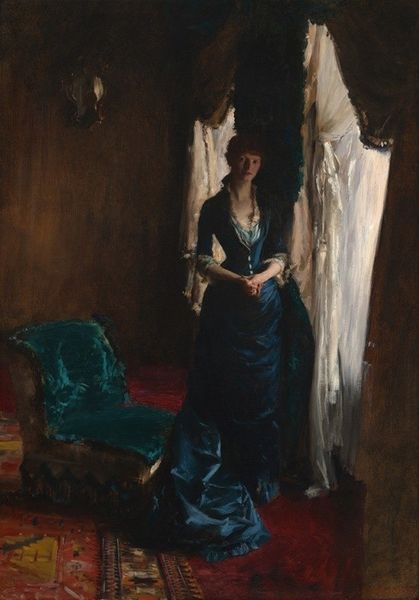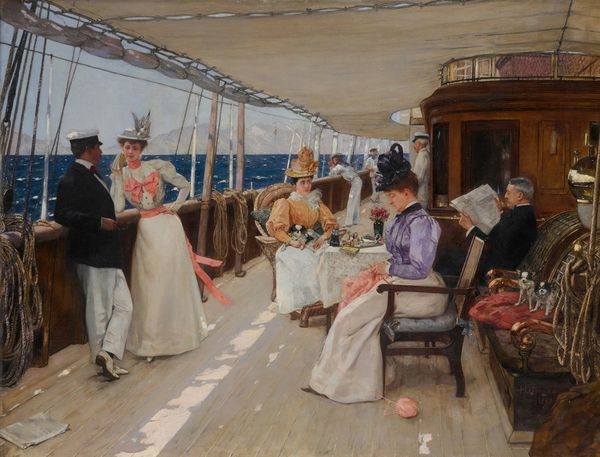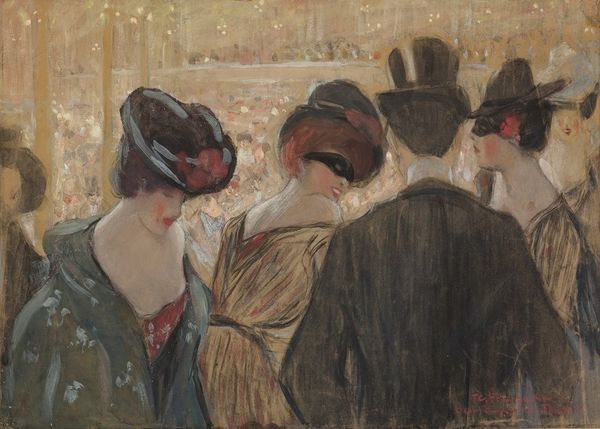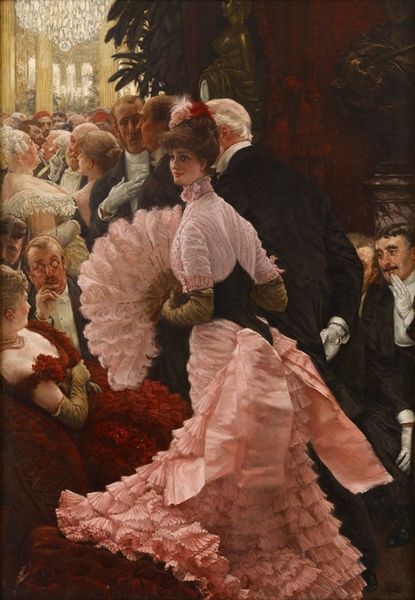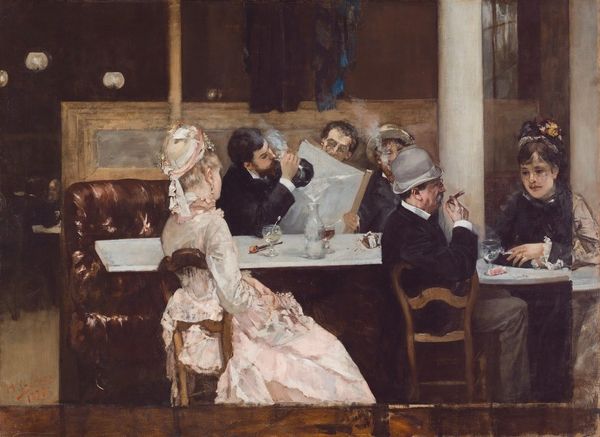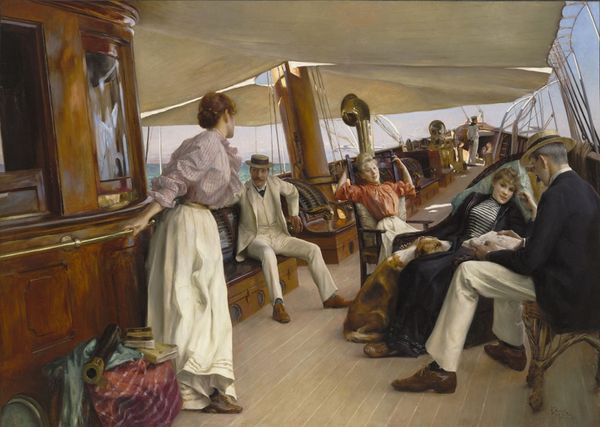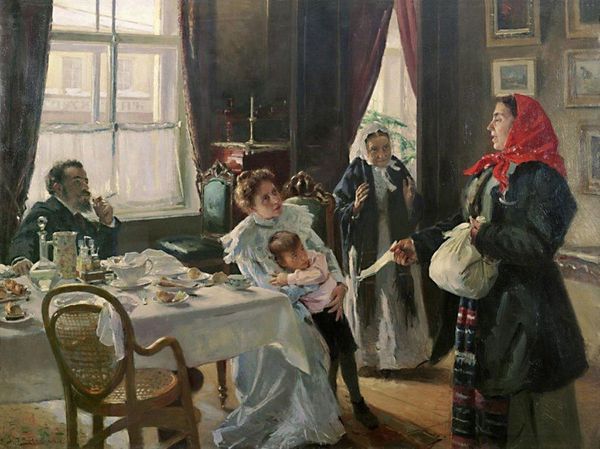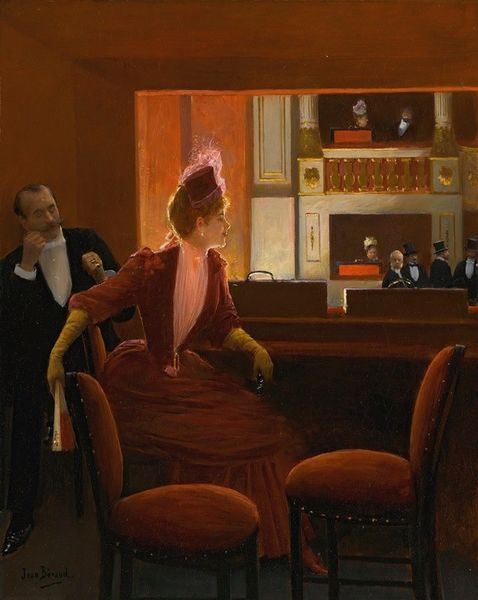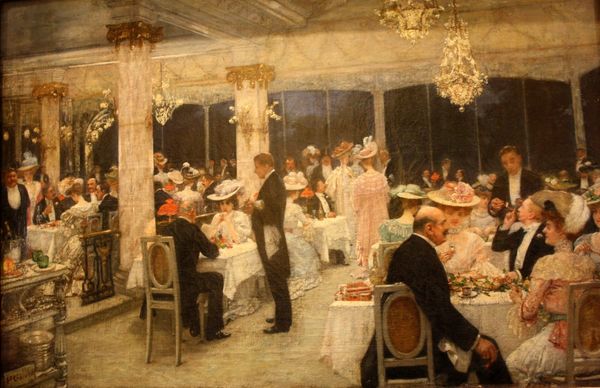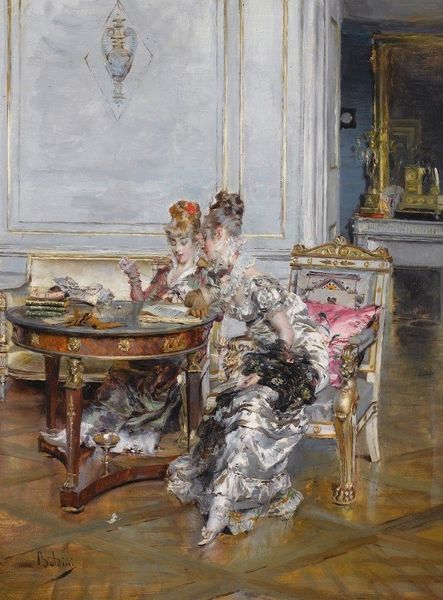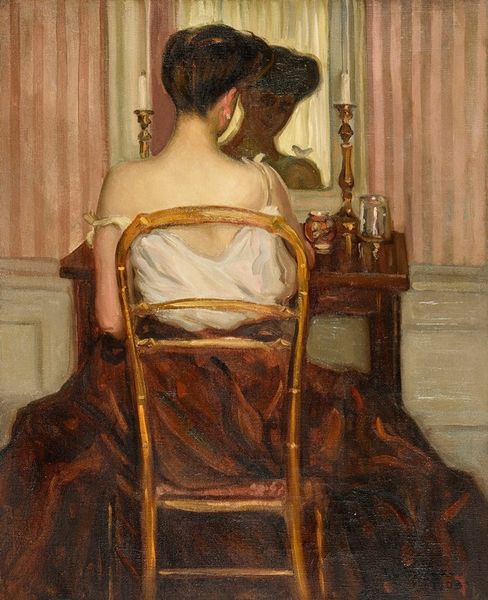
Copyright: Public Domain: Artvee
Editor: This is "La demoiselle de magasin," or "The Shop Girl," an 1878 oil painting by James Tissot. It gives a peek inside a Parisian shop. There's this interesting tension—a calm interior contrasting with the busy city life blurred in the background. What do you see in this piece? Curator: The contrast you mention is quite striking. For me, the shop girl, exiting the shop carrying a purchase, embodies a pivotal shift in cultural values and expectations during this era. Editor: How so? Curator: Consider the symbolism present: The corset, prominently displayed in the shop window, acts as a potent symbol of societal constraints on women. Yet the shop girl seems detached. Do you perceive a challenge to these rigid social codes? Editor: I hadn’t thought of it that way, but her poised stance, almost a world-weariness, suggests a personal narrative beyond the confines of her role. It’s in her eyes, I think. What about the items she's carrying, like that package? Do they have some special cultural meaning? Curator: The carefully wrapped package and her attire subtly signal emerging consumerism and individuality. These objects start to define her identity and create personal expression. She navigates this world, negotiating a balance between convention and individual aspirations. Does that reading resonate with you? Editor: It really does. Seeing how Tissot uses those items as cultural shorthand, really unlocks another dimension to the work for me. I appreciate how the objects almost act like words or emblems. Curator: Precisely, and recognizing these symbols illuminates how artworks participate in cultural conversations. Editor: I’ll never look at a genre painting the same way again! It really demonstrates how everyday images carry social significance.
Comments
No comments
Be the first to comment and join the conversation on the ultimate creative platform.
